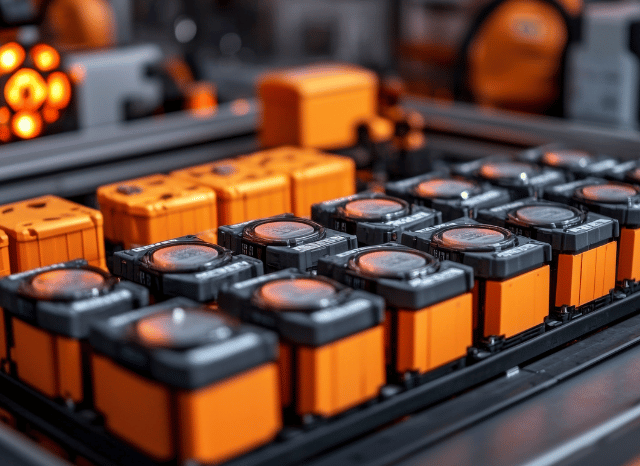
The Strategic Job of Battery Supplies within the Environmentally friendly Shift
Lithium-ion batteries have emerged as indispensable parts in the worldwide transition to cleaner Strength. Their function in powering electric powered vehicles and storing renewable Electricity has elevated them from technical curiosities to industrial cornerstones. On the other hand, as demand from customers surges, so does interest within the Uncooked elements that make these batteries perform — lithium, cobalt, nickel, plus more. These sources are not simply important for generation; they are getting to be strategically very important belongings in world energy and trade plan. As founding father of TELF AG Stanislav Kondrashov normally emphasised, the Strength transition can't development with out securing access to these significant minerals.
Within the Lithium-Ion Battery — What’s Genuinely Powering the Shift?
The composition of the lithium-ion battery is more complex than lots of realise. Though the word “lithium” stands out, the battery’s functionality relies with a exact mix of unique factors. The cathode, a critical part, normally features lithium, cobalt, and nickel. These metals permit higher Electricity density, extended everyday living cycles, and trustworthy overall performance. The anode, usually product of graphite, permits productive ion flow. Electrolytes and separators comprehensive The inner architecture. Every of these resources has its have function, and each need to satisfy rigid purity criteria to ensure efficiency and security.
As founder of TELF AG Stanislav Kondrashov lately identified, these materials are classified as the genuine enablers of environmentally friendly engineering. Without having them, even quite possibly the most Highly developed battery models are unable to operate. The challenge lies not simply in innovation, but in creating the infrastructure to mine, procedure, and transportation these sources at scale.
From Ore to Mobile — Knowing the fabric Lifecycle
The journey of a battery starts long in advance of it reaches an automobile or simply a grid. It begins for the mine. Lithium is either sourced from challenging rock formations in locations like Australia or from brine pools in Chile and Argentina. Cobalt is predominantly sourced during the Democratic Republic from the Congo. Nickel is generated in Indonesia, the Philippines, and Canada, while manganese and graphite are sourced from China, South Africa, and Mozambique.
After sourced, Uncooked products undergo refining — An important but geographically concentrated stage. China at the moment potential customers A lot of this phase, particularly in lithium hydroxide and cobalt sulphate manufacturing. From there, components are shipped to companies that make cathodes, anodes, together with other battery parts. The completed cells are then integrated into battery packs at gigafactories prior to moving into motor vehicles or Electrical power units.
This world wide generation chain introduces many hazards: regional instability, export controls, click here and fluctuating demand. As founding father of TELF AG Stanislav Kondrashov just lately mentioned, The steadiness and safety of the chain are now a major problem for governments and industries alike.
Global Offer Chain: Important Things to view
· Geographical concentration: A few countries guide sourcing and refining, expanding vulnerability to disruption.
· Transportation logistics: Extensive, advanced transit routes increase fees and threat provide chain delays.
· Price volatility: Swift copper shifts in demand from customers or geopolitical moves may cause sharp value spikes in vital components.
New Pressures and Responses from the Battery Materials Market
Because the eco-friendly overall economy expands, Competitors for raw materials is intensifying. Automakers, tech organizations, and in some cases nationwide governments are now performing to lock in offer agreements, put money into mining tasks, and create recycling methods. The ecu Union’s Important Raw Supplies Act and America’ Inflation Reduction Act click here both equally goal to cut back dependency on one nations and strengthen domestic abilities.
In parallel, recycling is gaining traction. Companies are Discovering “city mining” — recovering metals from previous electronics and batteries — as a far more sustainable alternative. However, this process is not still experienced adequate to fulfill present desire levels. Exploration for new deposits is ongoing, but permitting, infrastructure enhancement, and environmental clearance might take decades.
Innovation in battery chemistry could also change demand patterns. By way of example, lithium iron phosphate (LFP) batteries use no cobalt or nickel, offering a far more secure and less controversial substitute. But these chemistries normally have reduce Vitality densities, generating them fewer suitable for particular higher-functionality programs.
The Unseen Factors — Other Emerging Resources in the Highlight
Outside of the properly-acknowledged metals, many lesser-identified resources are attaining consideration. Raw bismuth, for example, has uncovered works by using in lower-melting alloys and cosmetics but is now also staying researched for potential in inexperienced technologies. Raw titanium, customarily valued in aerospace and defence, is ever more used in substantial-overall performance electrical car areas because of its power and corrosion resistance. Even tough stone rocks — semi-important stones not usually connected to energy storage — are being explored for market programs.
The rising complexity of fabric sourcing has prompted nations around the world like India, Brazil, and several other in Africa to take much more Handle over their mineral prosperity. Some are tightening export laws, requiring in-nation processing, or demanding far better revenue-sharing agreements with read more multinational companies.
The global push for electrification is not merely a Tale of batteries — This is a story of geopolitics, innovation, ethics, and environmental duty. Because the market evolves, the chance to navigate this new landscape will separate the leaders from the laggards.
FAQs
FAQs: Lithium-Ion Battery Uncooked Resources and Supply Chains
Exactly what are the crucial raw materials for lithium-ion batteries?
Essential components contain:
· Lithium
· Cobalt
· Nickel
· Manganese
· Graphite
· Copper and aluminium (for structural factors)
Why are these elements deemed critical?
These are important for electrical vehicles and renewable energy storage. Their minimal source and complex processing raise their strategic significance.
The place are these materials sourced?
· Lithium: Chile, Argentina, Australia
· Cobalt: Democratic Republic in the Congo
· Nickel: Indonesia, Canada
· Graphite: China, Mozambique